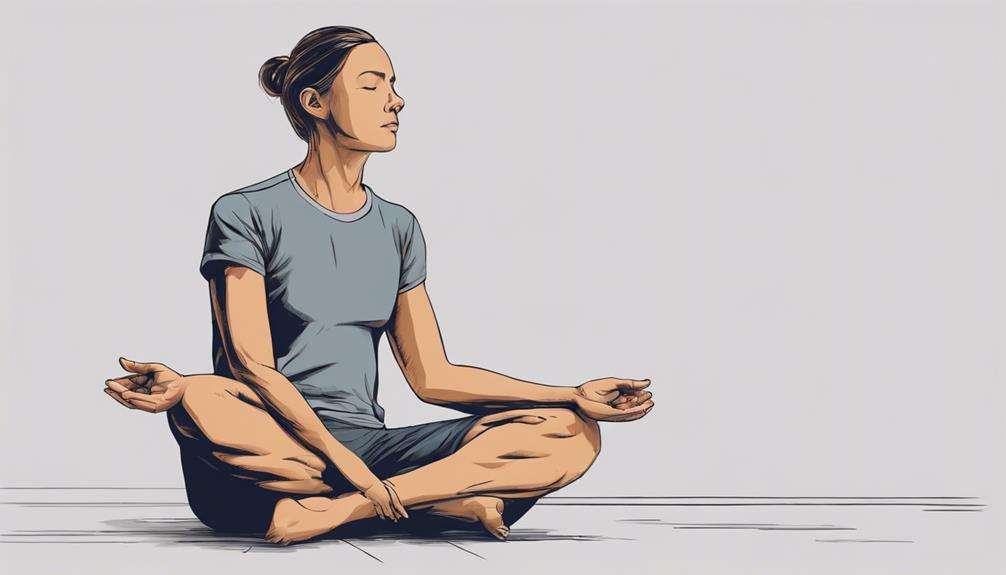As you dip your toes into the calming waters of relaxation and flexibility through yoga, consider this guide your compass to exploring the vast seas of inner peace and physical wellness.
Discover how each breath and stretch can reveal a domain of tranquility and suppleness within you, guiding you towards a more harmonious existence.
Explore the depths of yoga's transformative powers, and reveal the secrets to a more flexible body and a serene mind.
Key Takeaways
- Relaxation techniques in yoga enhance overall well-being by reducing stress and activating the parasympathetic nervous system.
- Calming breath techniques like deep belly breathing aid in triggering the relaxation response and reducing stress and anxiety.
- Flow sequences in yoga improve flexibility and mobility by linking breath with movement for a fluid practice.
- Partner stretches with props and coordinated breath movements enhance flexibility and target various muscle groups effectively.
Importance of Relaxation in Yoga
Relaxation plays a pivotal role in yoga practice, offering a gateway to reduce stress and enhance overall well-being through activating the parasympathetic nervous system. By promoting relaxation, yoga creates a space for you to unwind and release tension, allowing your body and mind to find peace.
The deep relaxation techniques incorporated in yoga not only help in reducing stress levels but also contribute to better sleep quality, improved heart rate, lower blood pressure, and decreased cortisol levels. This mindful approach to relaxation not only benefits your physical health but also enhances mental clarity, focus, and emotional balance.
When you engage in relaxation during yoga sessions, you're fostering resilience against the daily stressors that life presents. By prioritizing relaxation in your practice, you're nurturing your body and mind, creating a harmonious balance that can positively impact your overall well-being. Embracing these moments of tranquility in yoga can lead to a profound sense of calm and rejuvenation that resonates throughout your day.
Techniques for Enhanced Relaxation
Shifting from the importance of relaxation in yoga, let's explore effective techniques for enhancing relaxation during your practice. When it comes to promoting relaxation, incorporating specific techniques can deepen your yoga experience. Here are some key methods to help you achieve a state of enhanced relaxation:
- Deep Breathing: Engaging in deep belly breathing can help calm the mind and relax the body, allowing you to sink deeper into your practice.
- Guided Relaxation Meditation: Utilizing guided relaxation meditations can aid in releasing tension and promoting a sense of peace and tranquility during your yoga session.
- Yoga Poses: Poses like Child's Pose, Cat-Cow Pose, and Standing Forward Bend are known for their ability to stretch the body, release tension, and facilitate relaxation.
- Legs-Up-the-Wall Pose: This restorative pose is excellent for soothing the nervous system, promoting stress relief, and enhancing relaxation benefits.
Breathwork for Relaxation
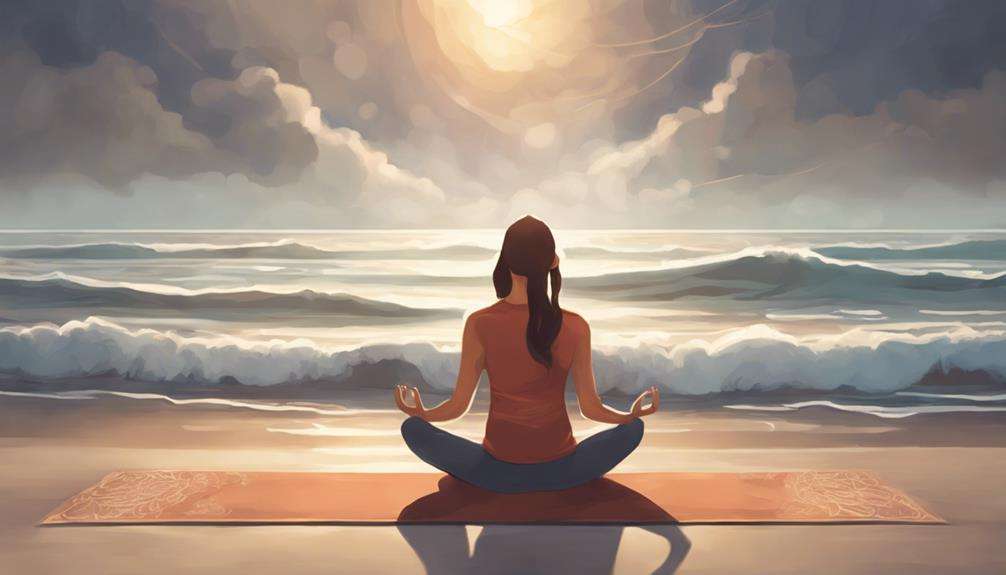
Take a deep breath and center yourself as we explore the profound effects of breathwork in yoga practice.
Through deep diaphragmatic breathing, you can soothe your nervous system and experience a significant reduction in stress levels.
Techniques like Ujjayi breath not only synchronize movement and breath but also promote relaxation and inner peace.
Deep Breathing Benefits
Deep breathing techniques in yoga sessions can enhance relaxation by increasing oxygen flow to muscles and activating the calming parasympathetic nervous system. Here are some benefits of incorporating deep breathing into your yoga practice:
- Increased oxygen flow promotes relaxation and reduces stress.
- Activation of the parasympathetic nervous system induces a calming effect.
- Controlled breathing helps regulate heart rate and blood pressure for relaxation.
- Deep breaths release tension in the body, aiding in flexibility and overall well-being.
Calming Breath Techniques
To induce a state of relaxation and calmness during your yoga practice, mastering calming breath techniques is crucial. Deep belly breathing, a cornerstone of breathwork for relaxation, triggers the body's relaxation response, reducing stress and anxiety.
Incorporating deep inhales and exhales into your yoga poses can help you cultivate a sense of peace and tranquility. Techniques like alternate nostril breathing are popular in yoga for calming the mind and balancing energy levels.
Mindfulness Practices for Relaxation
Engage in mindfulness practices during your yoga sessions to enhance relaxation and foster a deeper connection with the present moment. Mindfulness techniques help quiet the mind, allowing you to fully immerse yourself in the practice and experience its benefits.
Here are some mindfulness practices to incorporate into your yoga routine:
- Deep Breathing: Focus on your breath as you move through poses, inhaling and exhaling deeply to calm your mind and body.
- Body Scan Meditation: Take a few moments to scan your body for tension or discomfort, allowing yourself to release any physical stress.
- Mindful Movement: Pay attention to each movement you make during yoga, syncing your breath with your actions for a harmonious flow.
- Self-Awareness Cultivation: Practice non-judgmental observation of your thoughts and emotions, fostering a greater understanding of yourself and promoting relaxation.
Yoga Poses for Flexibility
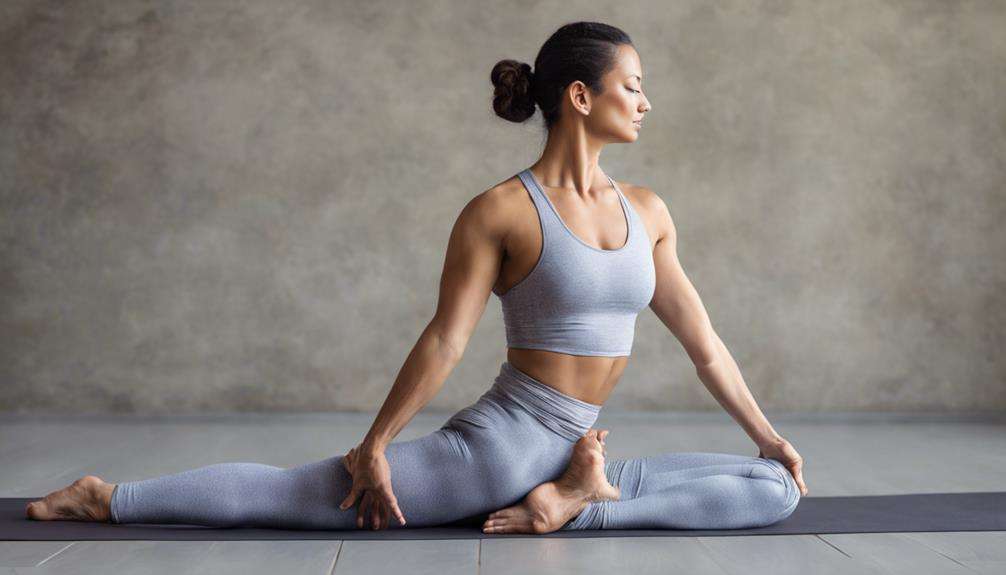
To improve your flexibility through yoga, focus on poses like Downward Dog, Forward Fold, Cobra Pose, Pigeon Pose, and Butterfly Pose. These poses help stretch and enhance your range of motion, promoting mobility and suppleness.
Incorporating Hatha yoga with alignment emphasis is particularly beneficial for beginners looking to increase flexibility gradually.
Stretching for Suppleness
Enhancing your flexibility through targeted stretches in yoga poses is essential for improving suppleness and range of motion in your body.
Here are some key points to help you maximize your flexibility through stretching:
- Yoga poses like Downward Dog, Forward Fold, and Pigeon Pose target major muscle groups, enhancing flexibility.
- Incorporating Cobra Pose and Butterfly Pose into your practice can help improve joint flexibility and range of motion.
- Practicing Hatha yoga with a focus on alignment can gradually and safely increase your flexibility.
- Regularly performing Warrior One, Warrior Two, and Reverse Warrior poses can boost both flexibility and strength in your body.
Enhancing Range of Motion
Incorporate yoga poses like Downward Dog, Forward Fold, and Pigeon Pose to enhance your range of motion and flexibility effectively. These poses target key areas such as the back, hamstrings, hips, and more, promoting increased flexibility.
By regularly practicing these poses, you can alleviate muscle tension, improve posture, and lower the risk of injuries. Breathing techniques intertwined with these poses aid in deepening stretches and fostering relaxation.
Consistent engagement in yoga poses for flexibility yields benefits like heightened mobility, decreased stiffness, and an overall boost in physical well-being. Embrace these poses to reveal a more supple body and a healthier, more agile you.
Mobility Through Yoga
For improved flexibility and mobility through yoga, certain poses like Downward Dog, Cobra Pose, and Pigeon Pose target specific muscle groups effectively. These poses stretch the entire back, promoting flexibility and mobility.
Remember to listen to your body to avoid strain and injury. Here are some key points to enhance your yoga practice:
- Downward Dog: Lengthens the spine, stretches the hamstrings, and strengthens the upper body.
- Cobra Pose: Opens the chest, stretches the front body, and strengthens the back muscles.
- Pigeon Pose: Releases tension in the hips, stretches the glutes, and improves hip mobility.
- Butterfly Pose: Increases flexibility in the inner thighs and groins, promoting hip opening.
Incorporate these poses into your yoga routine for improved flexibility and overall mobility.
Flow Sequences for Flexibility
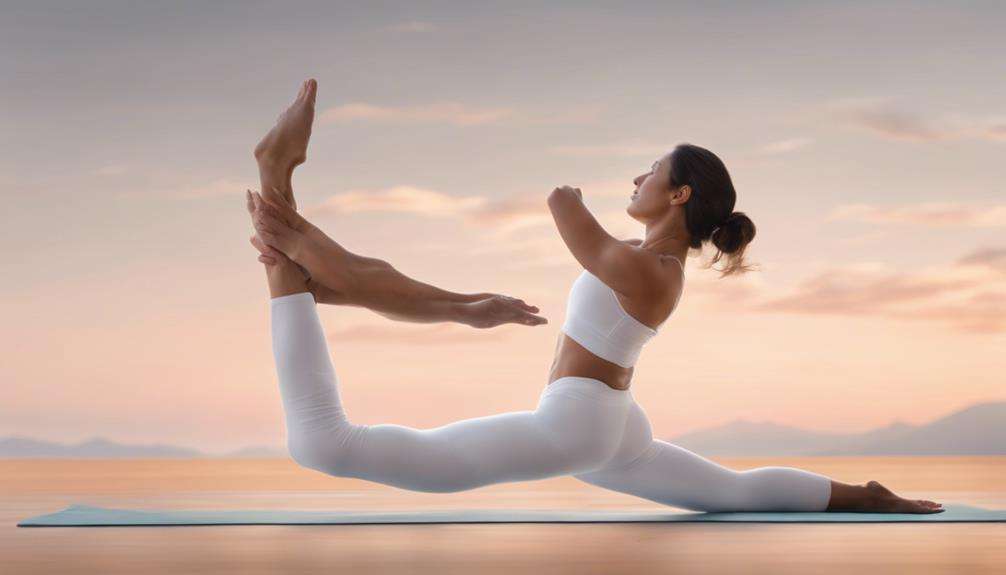
To enhance your flexibility and mobility effectively, consider incorporating flow sequences into your yoga practice. Flow sequences in yoga combine poses strategically to improve flexibility and mobility. These sequences not only aid in moving smoothly between different poses but also focus on linking breath with movement for a fluid practice.
By practicing flow sequences regularly, you can enhance your range of motion and overall flexibility. Additionally, flow sequences can be tailored to target specific areas of the body, promoting deep stretching and relaxation. This targeted approach helps in loosening tight muscles and increasing flexibility in those areas.
Through the dynamic nature of flow sequences, you engage various muscle groups, fostering flexibility throughout your body. Embrace the fluidity and grace of flow sequences in your yoga practice to access a new level of flexibility and mobility.
Partner Stretches for Flexibility
Consider partnering up to deepen your stretches and improve flexibility through gentle assistance in your yoga practice. Partner stretches offer a unique way to enhance your flexibility while fostering a sense of connection and trust with your yoga buddy.
Here are some tips to make the most out of your partner stretching sessions:
- Use Props: Incorporating yoga props like blocks or straps can help both partners achieve a deeper stretch securely.
- Breathing: Inhale: Coordinate your breath with your partner's movements to synchronize your actions and enhance the stretching experience.
- Explore Different Poses: Try partner yoga poses like double downward dog or partner seated twists to target different muscle groups and improve flexibility.
- Communicate and Adjust: Stay in constant communication with your partner to verify you're both comfortable and adjust the intensity of the stretch as needed.
Partner stretches not only increase flexibility but also promote teamwork, communication, and shared mindfulness during your yoga practice.
Daily Routine for Relaxation and Flexibility
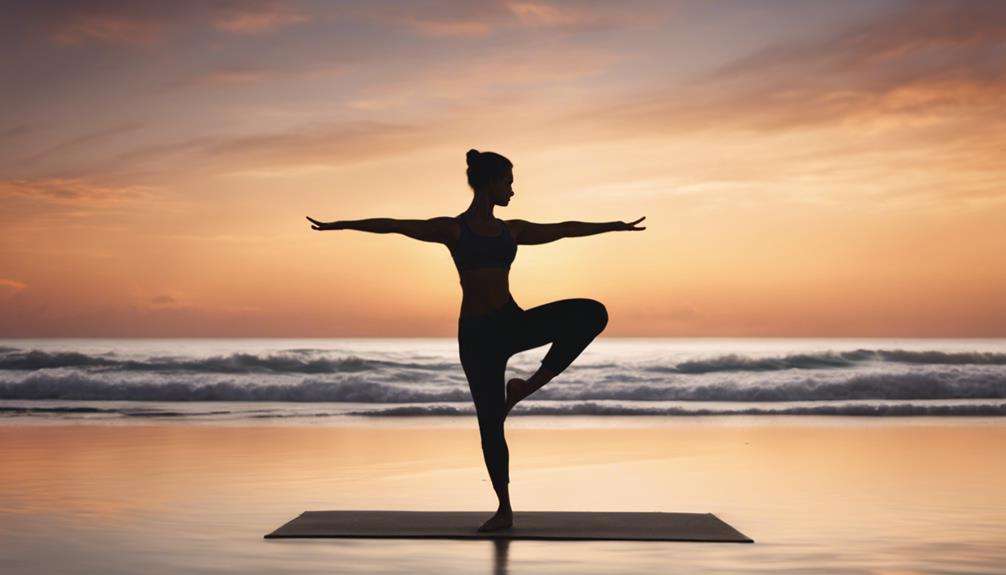
Starting your day with gentle yoga stretches can effectively promote relaxation and flexibility. Incorporating deep breathing techniques into your routine helps calm the mind and enhance the stretching benefits.
Begin with simple stretches like Cat-Cow, Child's Pose, and Forward Fold to gently awaken your muscles and increase blood flow. Move into more active poses such as Downward Dog, Warrior I, and Cobra to further improve flexibility in different muscle groups.
Remember to focus on your breath, inhaling deeply to expand the lungs and exhaling fully to release tension. Consistent practice of these gentle yoga stretches not only enhances flexibility but also aids in stress reduction and overall well-being.
Listen to your body's cues and adjust the intensity and duration of the routine accordingly. By prioritizing relaxation and flexibility in your daily yoga practice, you can cultivate a sense of balance and tranquility that carries through the rest of your day.
Frequently Asked Questions
How Do You Get Super Flexible With Yoga?
To get super flexible with yoga, focus on deep stretches that target different muscle groups. Control your breath to relax muscles and deepen each stretch. Gradually increase practice intensity and use props for proper alignment.
Which Yoga Style Is Best for Flexibility?
For improving flexibility, Yin Yoga and Ashtanga Yoga are top choices. Yin Yoga targets deep tissues with long passive stretches, while Ashtanga Yoga blends breath and movement to enhance flexibility gradually. Both styles offer effective results.
How Often Should You Do Yoga for Flexibility?
For flexibility gains, aim for daily yoga practice. Benefits include improved range of motion and reduced stiffness. Vary stretching techniques to challenge muscles and track progress. Listen to your body's cues for best results.
What Every Yogi Needs to Know About Flexibility?
Discover the secrets of flexibility in yoga. Embrace the benefits of enhanced mobility and joint health. Immerse yourself in techniques like using props for support. Progress steadily through poses, overcoming challenges with each stretch.
Conclusion
As you wrap up your yoga practice, remember that relaxation and flexibility go hand in hand. By incorporating breathwork, mindfulness, and specific poses into your daily routine, you can achieve a state of inner peace and physical well-being.
Embrace the journey of self-discovery and growth through yoga, and watch as your body and mind align in perfect harmony. Remember, the key to ultimate relaxation and flexibility lies within you.
Namaste.



